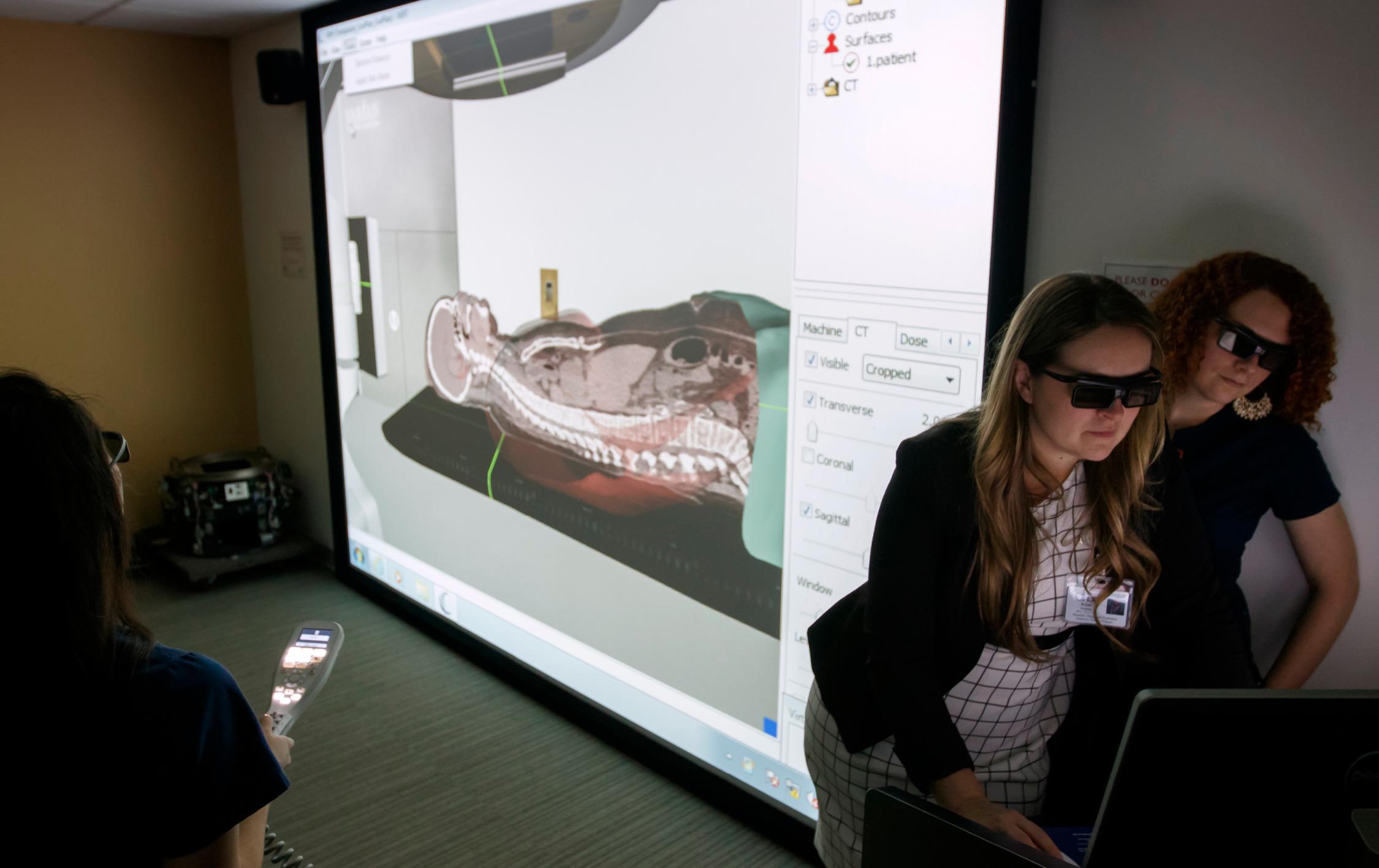
Using 3D goggles, people can get a better understanding of a medical procedure.
OHSU / OHSU
Doctors at the Tuality/OHSU Cancer Center in Hillsboro have started giving patients a three-dimensional virtual explanation of their prostate radiation treatment.
Until now, the 3-D "Virtual Environment Radiotherapy Training" system has only been used by doctors and medical students to visualize the administration of radiation treatment.
But Tuality/OHSU doctors announced Wednesday they'd begin using the technology to give patients a better idea of what they’re about to experience.
Al Miller, 74, said he listened to his doctor and read many articles about treating prostate cancer, but something was missing.
“I’m a visual person," he said. "I could not see what was actually physically taking place to my body. And then all of a sudden through this video, I could see it."
Miller said he appreciated that he could see key markers in his body and all the nearby organs.
"It shows everything,” he said.
Tuality/OHSU doctors hope the 3-D simulation will reduce patient stress and improve outcomes. If successful, doctors plan to use the same technology in breast cancer, head and neck cancers and sarcomas.
"Radiation therapy can be a scary thing for patients," said Kristi Tonning, director of the radiation therapy program at the OHSU Knight Cancer Institute.
"We can show the patient and family what to expect, and what happens during treatment, to help alleviate concerns," Tonning added. "We can reduce potential apprehension with a 20-minute virtual simulation experience.”
The American Cancer Society estimates that by 2020, the number of patients receiving radiation therapy as part of their initial treatment course is expected to increase by 22 percent, from 470,000 to 575,000 patients per year.
Charles Thomas Jr., the head of radiation medicine at the Knight Cancer Institute, said no other hospitals in the area are offering the technology.
"We have the only radiation therapy training program in Oregon, and one of the few in the Pacific Northwest,” he said.
Still, the push for more radiation treatment may not be all good news. Some studies have shown an over-reliance of aggressive treatment for prostate cancer. One study found that some cases, when left alone, may cause fewer problems for a patient than the side effects of radiation.
